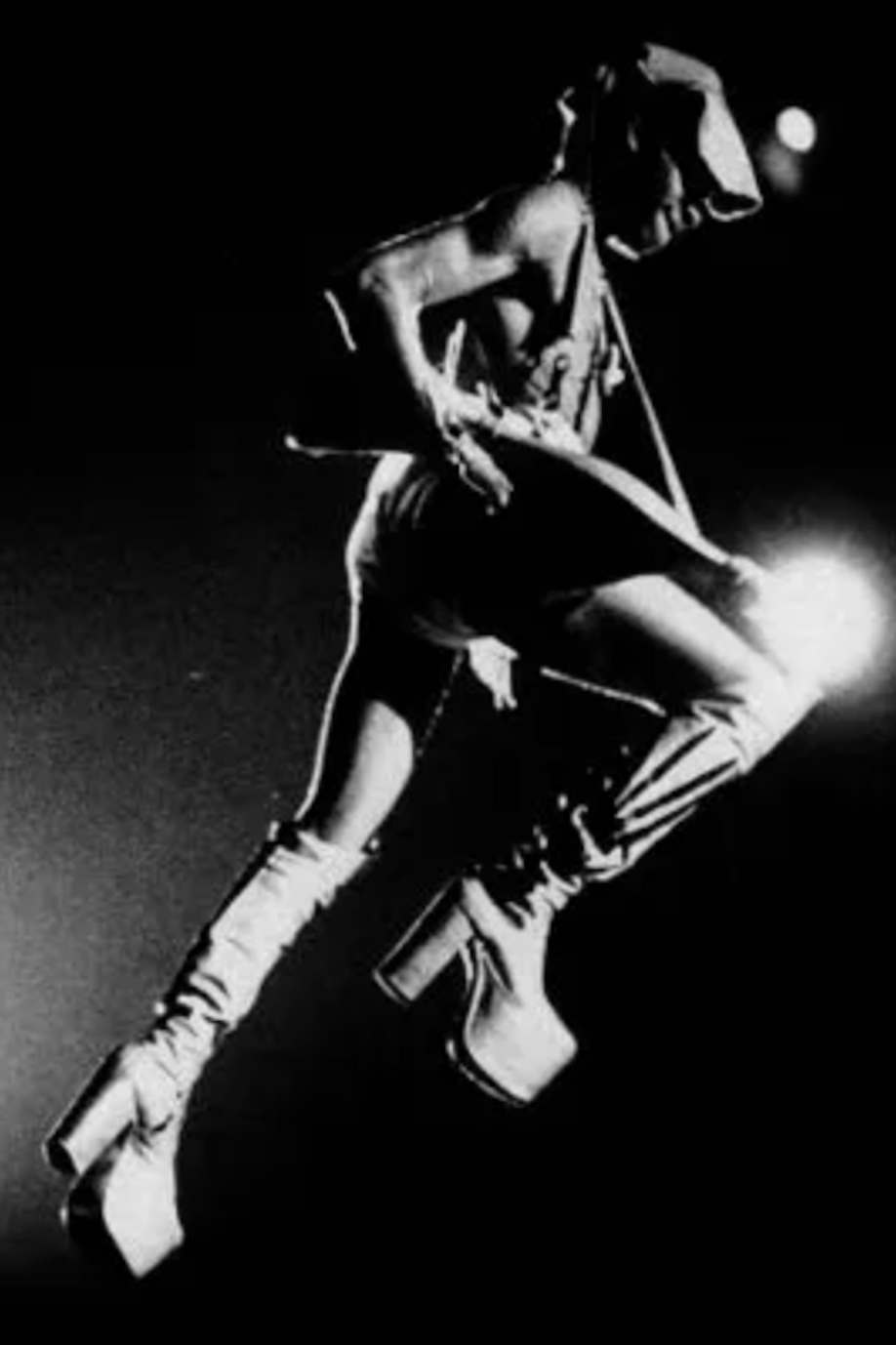Ep 32: Linda Shider [P-FUNK/GARRY SHIDER]
/When singer/musician/songwriter LINDA SHIDER met the folks in Parliament-Funkadelic, she was working as a stewardess for Pan Am. A friend of hers had just moved to San Francisco, so she invited Linda to come visit. That friend in turn introduced her to a woman who was dating Bernie Worrell, wizard of the boards, and from there she became acquainted with the rest of the funk family, including GARRY SHIDER, whom she wound up hanging out with at a party in L.A. Linda “Legz” had a boyfriend at the time, but she had already been an admirer of the band. “To me, they were like the black Rolling Stones,” she says. “Their aura… their vibe… They were just so intense, and you know they were real sexy onstage.”
She and Garry decided to become a couple soon after. She went on the road with him–following the tour bus in her car, or flying in for certain gigs. Then she joined them onstage for the first time–at Madison Square Garden. She even wound up on the cover of Rock & Soul magazine. But she wasn’t just some random hanger-on in the entourage. She was a leader with a deep background in civil rights advocacy who had fronted her own band, Legz, belting out heavy rock tunes like “Back in Black” by AC/DC. They also released the epic single “It Don’t Come Easy,” a impressively intricate and gooey deep cut which exhibits her complex compositional chops.
Indeed, this particular skill led to her becoming one of the very few credited woman songwriters in P-Funk history. It all started with a baby grand which lived in a hallway at United Sound in Detroit, where most of the P-Funk stuff was recorded. A gifted pianist, she just sat down and started playing. Somebody’s ears perked up. “George came by and he said ‘Hm, I like that,’” she recalls. “And he said, ‘Garry… figure out the chords and stuff and let’s go record that bad boy… I think Ima use that for Parlet.’” The song was called “Are You Dreaming?” and arrived to the world as part of Parlet’s classic debut, the Pleasure Principle.
Nowadays, since Funk doesn’t really have a retirement fund, Ms. Linda still keeps busy. She paints, makes jewelry and is part of annual the Funkateer’s Ball in Bethesda, MD every September. She also continues to write, going so far as to create the funky comic book, DIAPERMAN, featuring Garry as the far-out titular superhero. “I always remembered when Garry was floating on that thin wire over the stadiums and coliseums and stuff, how scary it was,” she says, explaining how she came up with the concept. “I felt like, since he was the one that volunteered to do it, that he earned some credit for that… And it was his 70th birthday in July, so I figured it was a good time to do it.”
In this wide-ranging and extremely candid interview, Mrs. Shider talks about her days as a preferred extra in Robocop and other Hollywood movies, her work with Stokely Carmichael and run-ins with the Klan, and how much she loved to sing “Red Hot Mama” onstage. She also reveals details about her husband’s final days, her efforts to preserve his legacy, why ladies have always been important to P-Funk, and how badly George ruined that one song they did.
Read More

![Ep 32: Linda Shider [P-FUNK/GARRY SHIDER]](https://images.squarespace-cdn.com/content/v1/5b92e921f407b45793492a47/1700703587160-MPSI5JY18KWEVGPQ8R3X/HERO.jpg)
![Episode 31: Dawn Silva [FUNK QUEEN]](https://images.squarespace-cdn.com/content/v1/5b92e921f407b45793492a47/ff291eee-d46b-4b25-a1af-469bbf382a18/hero.png)
![Episode 30: Rickey Vincent [HISTORY OF FUNK]](https://images.squarespace-cdn.com/content/v1/5b92e921f407b45793492a47/1673574878313-5IC95FAW9M4ZA3P7DMAX/rickey+vincent+-+the+nose+xtra.jpg)
![Episode 29: Rustee Allen & Levi Seacer Jr. [SLY/ PRINCE/PURPLE ONES]](https://images.squarespace-cdn.com/content/v1/5b92e921f407b45793492a47/1669855353877-ZSLUVL19K7BGNIRVOK3T/thumb.jpg)
![Episode 28: Stevie Pannell [P-FUNK]](https://images.squarespace-cdn.com/content/v1/5b92e921f407b45793492a47/1667748877915-KZ7N9X5G66E7X482496C/IMG_2103.jpg)
![The Mayor’s Mission: A Tribute to Latin Rock and the Bay Area [an Aced Out Podcast Special]](https://images.squarespace-cdn.com/content/v1/5b92e921f407b45793492a47/b00209d0-f84c-49fa-a95e-4e9b0985d662/screen+shot+2022-09-12+at+12.41.59+pm.jpg)
![Ep 27: Patryce “Choc’let” Banks! [GRAHAM CENTRAL STATION]](https://images.squarespace-cdn.com/content/v1/5b92e921f407b45793492a47/b11231f5-f938-45a3-a05c-27acd1f99797/01.png)
![Ep 26: Jay Double You! [SLIGHT RETURN]](https://images.squarespace-cdn.com/content/v1/5b92e921f407b45793492a47/1650823913770-XS5T5Q4I1N8VG21XGES1/1.png)
![Ep 25: Juan Escovedo [SHEILA E, PRINCE, et al]](https://images.squarespace-cdn.com/content/v1/5b92e921f407b45793492a47/ad7ffa0c-84cf-49f2-a734-a2421e3f3333/Picture1.png)
![Episode 24: Starr Cullars [P-FUNK, et al]](https://images.squarespace-cdn.com/content/v1/5b92e921f407b45793492a47/a2b9ef48-de97-4931-be26-b7f2c0e638ad/ME+North+Star.jpeg)
![EP 23: Muruga Booker [P-FUNK, et al]](https://images.squarespace-cdn.com/content/v1/5b92e921f407b45793492a47/1633998957858-ZTPXHQ0OPYD70G51CHMS/01.png)
![EP 22: Gooch Gang [KALIBAN & MWNSTR]](https://images.squarespace-cdn.com/content/v1/5b92e921f407b45793492a47/1631561375524-3RVGXVBALD0ZUXJN10EP/1%2B2v2.png)
![EP 21: Grady Thomas [P-FUNK]](https://images.squarespace-cdn.com/content/v1/5b92e921f407b45793492a47/1626723431255-CPZN09D240J1GR1RUNZU/04.png)
![EP 20: Marshall Thompson [CHI-LITES]](https://images.squarespace-cdn.com/content/v1/5b92e921f407b45793492a47/1622689236402-IOPFDT7R2D4KHJ252Q2W/01.png)
![Episode 19: Andre Foxxe [P-FUNK, et al]](https://images.squarespace-cdn.com/content/v1/5b92e921f407b45793492a47/1620081861643-XPYE8FDY33FK0R3VZR8Q/01.png)
![Episode 18: Richard Segovia [PURO BANDIDO]](https://images.squarespace-cdn.com/content/v1/5b92e921f407b45793492a47/1618272153033-82ZEAOLAR7EVPK9432UU/combo.png)
![Episode 17: Steve Boyd [P-FUNK/FIVE SPECIAL]](https://images.squarespace-cdn.com/content/v1/5b92e921f407b45793492a47/1614651790783-8K8NH15JELK8CEFDJZKP/combo.png)
![Episode 16: Patrick Owens aka Brotha P [FUNKANAUTS, et al]](https://images.squarespace-cdn.com/content/v1/5b92e921f407b45793492a47/1613408028467-AU8MCIZER0REYZ6FE20C/Picture1.png)
![Episode 15: Sweet LD [OAKTOWN 357/MC HAMMER]](https://images.squarespace-cdn.com/content/v1/5b92e921f407b45793492a47/1611634535392-LNQ863KYKA3FVPUWL2RP/aced-out-ep15-Sweet-LD.png)
![Ep 14: Shirley Hayden [PARLET/P-FUNK]](https://images.squarespace-cdn.com/content/v1/5b92e921f407b45793492a47/1609811366514-CRX8F5TJB60QB5STPFD7/aced-out-triptych-14.png)






